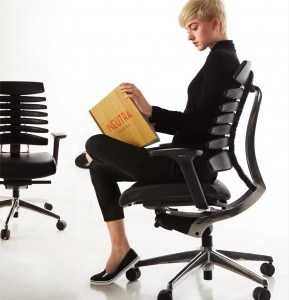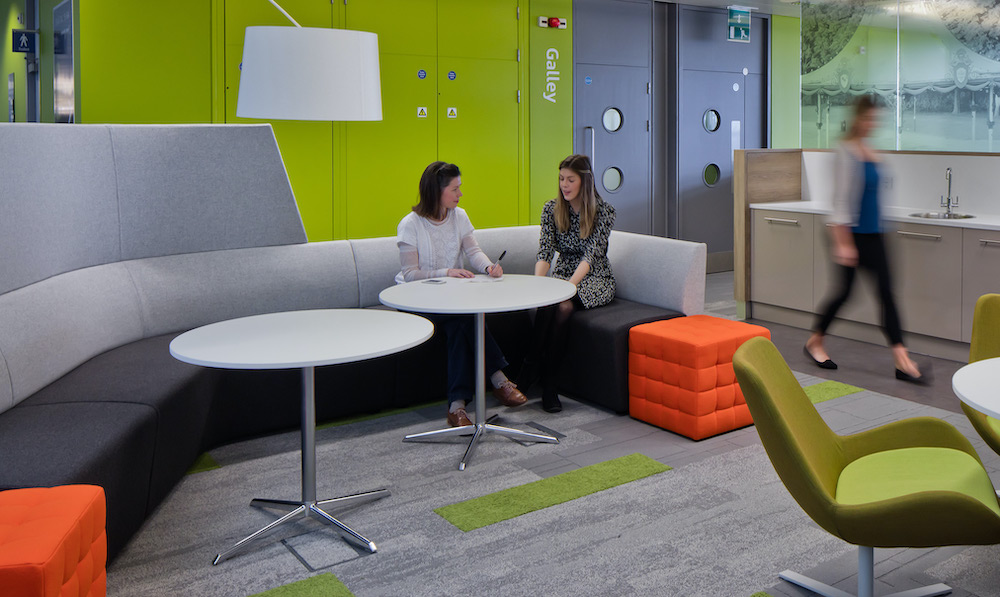Details
The Collaboration Fixation
17 May 2016‘Collaborative’ is now as ubiquitous a word to the furniture industry as ‘Organic’ is to the food industry. Collaborative areas have risen to a must-have item on all commercial interior design concepts and requirements, with most large firms making it a priority.
But why are these areas so vital to an organization? Here’s a great analogy from a popular manufacturer on the topic,
“ What’s so important about collaborative school furniture? Well, if a swim team tried to practice on wrestling mats it wouldn’t get very far because the environment is wrong for the learning process. ”
Simple enough, right ? Well, more often than not we find ourselves facing a client or designer entering our showroom with the familiar phrase “ I’m looking for collaborative products “, but wouldn’t be able to spot if even if it was right under their nose. And it’s not their fault either - the word ‘collaborative’ is thrown around so often it’s hard to tell whether they really mean it or just saying it so they seem up to date with the latest trend.
Let’s have a look at what all the fuss is about

The Modern Collaborative Movement
So-called ‘Collaborative’ spaces have always been around ; we just never termed it that way. We built closed meeting rooms, brainstorming rooms and large conference rooms for working. The flaw with these traditional rooms lies in their design and build stage itself - they’re closed off and lack flexibility.
Offices need to support different modes of working. As more millennials are moving into the workspace, there’s going to be an increased need for ecosystems that foster the current mode of working and innovating thinking.No one wants to have to book a meeting room that has to be booked in advance just for a 10-minute discussion. Cubicles are relics from an age long gone, we’re now craving working spaces that integrate with the office space as whole, so spontaneous brainstorming and meetings are encouraged.
There’s another reason I believe that facilitates this development - the need for operational and innovative excellence. Decision-making time shouldn’t be a bottleneck to the design and development process, it makes a huge difference in a large firm with team players spread across departments. Which means it’s crucial that discussions and presentations can be held on the go.
Obviously, technology and furniture are core elements to this, which we talk about further
What defines a collaborative workspace ?
Top manufacturers have already caught on to the trend, with some of them pioneering in it. For example UK based manufacturer OrangeBox has moved well beyond traditional desking systems to develop an entire portfolio of products that fit what they call the ‘ Mobile Generation’ Workforce. It’s clear that work is more collaborative and at the same time based on social interactions between employees.
From our experience, here’s what a collaborative furniture should be able to do
Allow for Flexibility
We mentioned this before. Closed and isolated areas that need to be booked in advance kills the spontaneity. It’s easier to have furniture like huddle pods to casually sit and engage in and offers privacy with acoustic support. Workers should be able to drop-in and start working on the go, instantly creating their workspace on the go. In addition to a desk and storage for your stuff, focus on soft-seating that invites fellow colleagues to be able to work as well.

Enable Technology
Technology keeps us from switching off. We’re a generation of always ‘On’ workers, which means employees tend to get fidgety if they see a low-battery sign on their phones. Besides simple access points, it’s wise to connect media consoles and presentation screens so information is easily shared across all participants in the discussion. So placing a couple of sofas with coffee tables won’t be of much use ( the real-estate head or facilities manager may also get you fired for wasting space ! )
A Canvas for Creativity
Given the right tools, even the most traditional person will start jotting down ideas on a table if they could. Make sure the space is supported with writable surfaces and tools to that enable teams to seamless project thoughts and ideas, not just through laptops and papers. IdeaPaint, the inventor of dry-erase paint, firmly believe in the fact that our creativity and ability to think out of the box is limited by the space we given to express ourselves.

Should be minimal, casual and open to interpretation
A study conducted on creating ideal collaborative workspaces suggests that the furniture in the space dictates how the space is use. Pantry style furniture will suggest a more casual setting, training tables with media units are tuned to more focused settings.
Keep in mind that collaborative spaces work best when it supports group interactions, is in close proximity to technology and offers a degree of privacy when needed so people are comfortable when sharing information.
The Total Office provides workspace solutions focusing on ergonomic and collaborative products that meet global environmental standards.
“Creating your work experience using ours”

_1.jpg)


